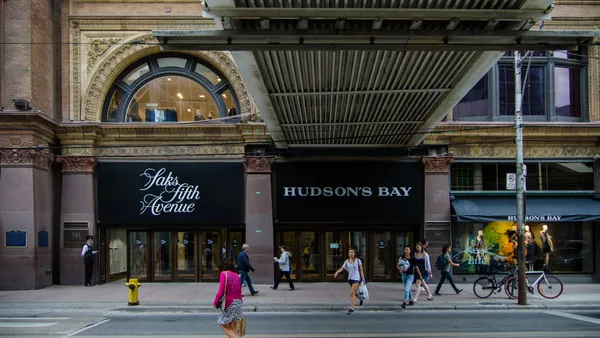Dive Brief:
-
Target Corp. has made changes to its “innovation portfolio” to focus on its core business in stores and online and to deliver on its strategic priorities, a company spokesperson told Retail Dive on Wednesday.
-
Target didn’t elaborate on the changes, but the Minneapolis Star-Tribune reported Wednesday that the retailer’s mysterious, Silicon Valley-based “Goldfish" startup, launched just last year, is being eliminated along with other, smaller tech-focused initiatives.
-
The cuts come amid key executive changes at Target’s tech suite: Jason Goldberger left the retailer in September after three years, just months after taking on the newly created position of chief digital officer, and earlier this month Jamil Ghani left his position as SVP of enterprise strategy and innovation (and his role as a Target-Techstars retail startup incubator mentor) to help expand Amazon Prime overseas.
Dive Insight:
Target has a well burnished reputation for innovation, and its Cartwheel app is a prime example of that. Cartwheel has risen above the fray among native retailer apps, and RSR Research analyst Nikki Baird singled it out to Retail Dive last year an example of a more traditional retailer getting in-store personalization right. (The app is rumored to be getting a payment feature soon, too.)
But digital bells and whistles don’t take a retailer far when its brick-and-mortar fundamentals are weak. That’s leading Target to a crossroad, according to the company’s statement Wednesday.
“At Target, we regularly pause to evaluate our business and have to make tough choices about where our company is best served to invest our time and resources,” according to the statement emailed to Retail Dive. “We recently made some changes to the innovation portfolio to refocus our efforts on supporting our core business, both in stores and online, and delivering against our strategic priorities. Target remains absolutely committed to pursuing what’s next. We see a tremendous opportunity to drive innovation in areas that will fuel our growth both in the short and long-term in areas such as digital, technology, supply chain and merchandising.”
The renewed focus on brick and mortar fundamentals "sounds like a good strategic direction for Target," Nick Egelanian, president of retail development consultants SiteWorks International, told Retail Dive. "But what does that actually mean to the consumer?"
Egelanian questioned Target's strategy to move into more smaller stores and said its weakness in grocery continues to drag the company down, noting that its selection is less robust than Wal-Mart's, and doesn't resonate in selection or price. "In my view, their experimentation with small stores does nothing but distract their need to engineer a strong recovery from their debacle in Canada," he said. "Aside from really abandoning store growth, they have an active agenda to monetize excess real estate in their larger underused parking fields. Taken together, Target strikes me as a rudderless ship without a core focused customer-driven store strategy or a central message to the consumer other than 'We are a little more attractive than Wal-Mart' — but that is simply not enough."
While Target is maintaining healthy e-commerce growth, it’s struggled with sales — e-commerce transaction growth of more than 30% in its holiday quarter was offset by a 1.7% decline in comparable store transactions. And, of course, its physical stores remain the great bulk of its business.
Target reported that same-store sales in the November/December holiday period fell 1.3% and total sales fell 4.9%, which the company says reflects the impact of the December 2015 sale of its pharmacy and clinic businesses to CVS as well as a “highly promotional competitive environment.” There are strengths beyond e-commerce, too: Same-store sales in the retailer’s signature categories – including wellness, beauty, baby and toys – grew nearly 3 percentage points faster than the company average.
Still, in light of the results, Target lowered its fourth quarter and full-year 2016 guidance: Target now expects Q4 same-store sales to decline in the range of 1.5% to 1% percent, compared with prior guidance of between a 1% decline and a 1% increase, and expects adjusted earnings to land between $1.45 and $1.55 per share, compared with its prior guidance of between $1.55 and $1.75 per share. For the full year, Target expects adjusted earnings of between $5.00 to $5.10 per share, compared with its prior guidance of between $5.10 to $5.30 per share.
Target divulged few specifics on Goldfish during the project's lifetime. West Stringfellow, Target's vice president of internal innovation and operations, first hinted at the project in Oct. 2015, and the following March, the retailer placed job listings seeking to hire about 20 staffers at its technology offices in Sunnyvale, CA. Stringfellow joined Target in 2015 as an “entrepreneur in residence,” and was quickly promoted to vice president of internal innovation and operations. He also headed up development of Target and Techstars’ retail tech startup accelerator. Stringfellow remains at Target according to his LinkedIn profile.















